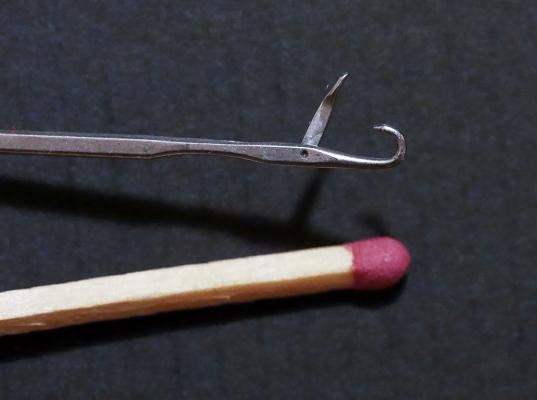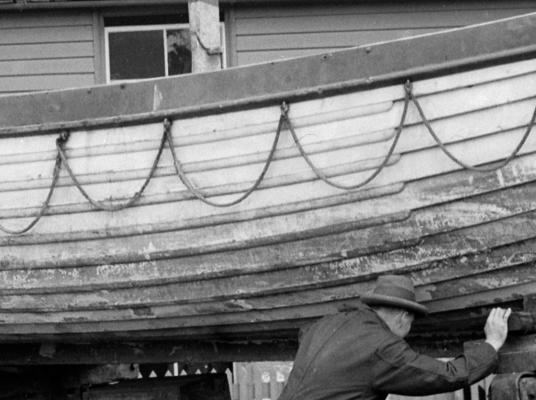
Per
-
Posts
77 -
Joined
-
Last visited
Content Type
Profiles
Forums
Gallery
Events
Posts posted by Per
-
-
Just found out a few more nice historical tidbits about this vessel.
Miller (one of the owners of the Carron iron works of carronade fame) proposed to King Gustaf of Sweden the building of a 144-gun ship of the line along the lines of the ”Experiment”. 74 m, 242 ft, long, it was this behemoth that was called ”The Sea Ghost”.
Fortunately, the King passed the proposition on to his naval construction expert, F. H. af Chapman.
After making the calculations, af Chapman turned it down flat because the ship could not possible carry the weight of of ordnance and crew, stating a catamaran was only suitable for a one or two-man vessel and ended his recommendation:
”It would be like giving an elephant the shape of a flea for it to be able to jump a 100 times its height straight up in the air. The result would be a very spoilt elephant and no flea.”
As an aside, the King sent Miller a finely crafted golden box as a token of gratitude. The box contained turnip seeds that Miller planted at his estate Dalswinton, just north of Dumfries.
Turnips, now a staple side dish for haggis, are still called Swedes in Scotland and the box now resides in British Museum.
Per
-
The remains of one of the 18th century’s strangest naval creations seems to have been rediscovered in Stockholm harbor.
Patrick Miller’s ”Experiment of Leith” was sunk here in 1795 as foundation for a jetty. She had been intended to be used in the 1790 war against Russia, but the war was over before she was completed.
The Experiment (that Chapman called "the English sea-spook") was double-hulled, like a catamaran, had five masts and four or five paddle wheels on the centerline that were propelled by muscle power.
http://sverigesradio.se/sida/artikel.aspx?programid=406&artikel=5731038
A pity she never came to use. Ten years later, Miller got William Symington to make him a steam engine to drive the paddle wheels and history was made.
Per
-
Zapon varnish is a good choice to protect copper.
Just be careful; Zapon is cellulose nitrate (guncotton!) dissolved in alcohol or ethyl acetate. You should not inhale the fumes and don't smoke if you use it indoors. It is highly flammable.
Per
-
Photos from NMM Gibson archive collection:
Per
-
-
That's awesome that they could identify that! My question is how they can identify a shipwreck if the ship has deteriorated and nothing discernible remains?
It is a question of probabilities. They can usually guesstimate the dimensions of the wreck from the position of the remains, nails, bolts, cannon and other things that have not disappeared.
Then they can make a educated guess of the age from the artifacts; this wreck can't have sunk before 1713 when the cannon were cast. Any coins found can narrow it down even further.
And then they go through the archives, wrecks usually leave traces in insurance claims, churches note bodies that have to be buried, there might be court proceedings.
Putting all that together leaves the probable suspects.
-
At least three of the raised cannon have been identified by their markings as 6-pdrs cast at Ehrendal iron foundry near Stockholm in 1713.
Per
-
I seem to remember that we had a discussion about the scaling of colours in MSW 1.0The scale effect on colours is very much discussed among our model railroading and plastic modeling friends. The smaller the scale , the lighter the colours should be to look authentic:1/32 scale add 7% white to the paint1/48 add 10%1/72 add 15%1/144 add 23%I'll definitely be looking for the grey and hemp hues when I get to that point.Per
-
-
Interesting item, this.
Much too low and wide to contain anything liquid. Any kind of sea would have it slopping over the brim. And too awkward for one man to carry without soaking himself all over.
The photo might be deceiving, but the thick wooden lid seems comfortably rounded at the rim.
If it is a container, my money would be on something light and dry, say a long lead or shot line that needs to be stored without kinks.
Could also be a porta potty. Helmsmen, for the use of.

Per
-
My luthier's shop has a big bench top version for bending the side wood of the guitar bodies.
They say a good bending temperature is between 350°-400°.
They also use a spring steel strap backing the wood, trapping the moisture and minimizing splitting.
Per
-
Thinking about various ways of silting up the wreck, it's easy to wander into Borges territory:
This will be fun to watch.
You could take a look at what model railroaders do, dust the wreck with the silt of your choice (if you can't find it outside somewhere, alternatives can be had by the bag from the MR shop), then fix the dust with a mist of diluted PVA glue that will be completely invisible when dry.
Rust, dust and gunk can be had as acrylic paint and pastel chalks used for highlights.
Per
-
In the "Ordnance Instructions for the United States Navy 1866", http://www.gutenberg.org/ebooks/19058
you'll find the recipes and painting instructions on pp. 83-89.
You will need a huge cauldron for boiling the 66 lbs of linseed oil for the 24 hours required.

Per
-
I think it is a movie maker fiction. As late as 1841, 33% of all Englishmen signed their names as "X", they simply could not write even their own names.
The situation was not much different in the rest of Europe. And that is the percentage for the entire male population, including nobility, clergy and business classes. The illiteracy percentage on the lower deck of a man o'war would have been much greater.
Per
-
Thanks John.
That sounds logical. A riveted steel hull would act like an abrasive paper on a wooden boat.
Per
-
-
I don't know your scale but mosquito netting, properly dyed, might be useful.
The trick is to get it to sag like the real ones did.
Per
-
http://www.dn.se/sthlm/mojlig-dansk-siktad-vid-kastellholmen
This one, probably a 17th century man o'war, surfaced in unusually low water right in the middle of Stockholm harbour this weekend, just across from my office.
It is thought to be a Danish prize, the Grey Wolf, taken during one of the perennial Swedish-Danish wars during the 16th-19th centuries.
Per
-
The Vasa museum in Stockholm has a bit about the Stockholm shipyard and the building of the Vasa:
http://www.vasamuseet.se/en/Exhibitions/The-Stockholm-ship-yard/
Per
-
Wasn't living space also very much depending on the size of ship?
I read that Thomas Cochrane in HMS Speedy had to open a skylight and set his tackle on the quarterdeck when standing up shaving. His 1.5 m high cabin was for sitting only.
Per




Details of Targeting & Fireing equipment
in Discussion for a Ship's Deck Furniture, Guns, boats and other Fittings
Posted
Stan,
Cannon did not have sights, the gunner aimed ”along the line of the metal”; when the target hove in view over the muzzle on the up roll, the cannon was discharged.
Because the carronade tapered towards the muzzle, this would put the shot about five degrees high, as opposed to a long cannon where the muzzle swell, the increased diameter at the muzzle, would put the shot only .5-1 degrees high. Even at the short ranges involved, this was partly the reason for the carronade's reputation for inaccuracy, and that’s why some carronades had a foresight on the muzzle or on the second reinforce.
”Around 1779 the tangent sight, similar in principle to the common rifle sight, was introduced but some years elapsed before it was universally adopted. Lord Nelson said he was prepared to try the new sight but was not very enthusiastic over it, because, he said, when he attacked he 'closed' with the enemy and sights were unnecessary.” W.L. Ruffell, "The Carronade"
Here are some photos of a gun lock you might find useful:
http://www.ima-usa.com/original-british-naval-cannon-flintlock-ignition-system-circa-1790.html
Per